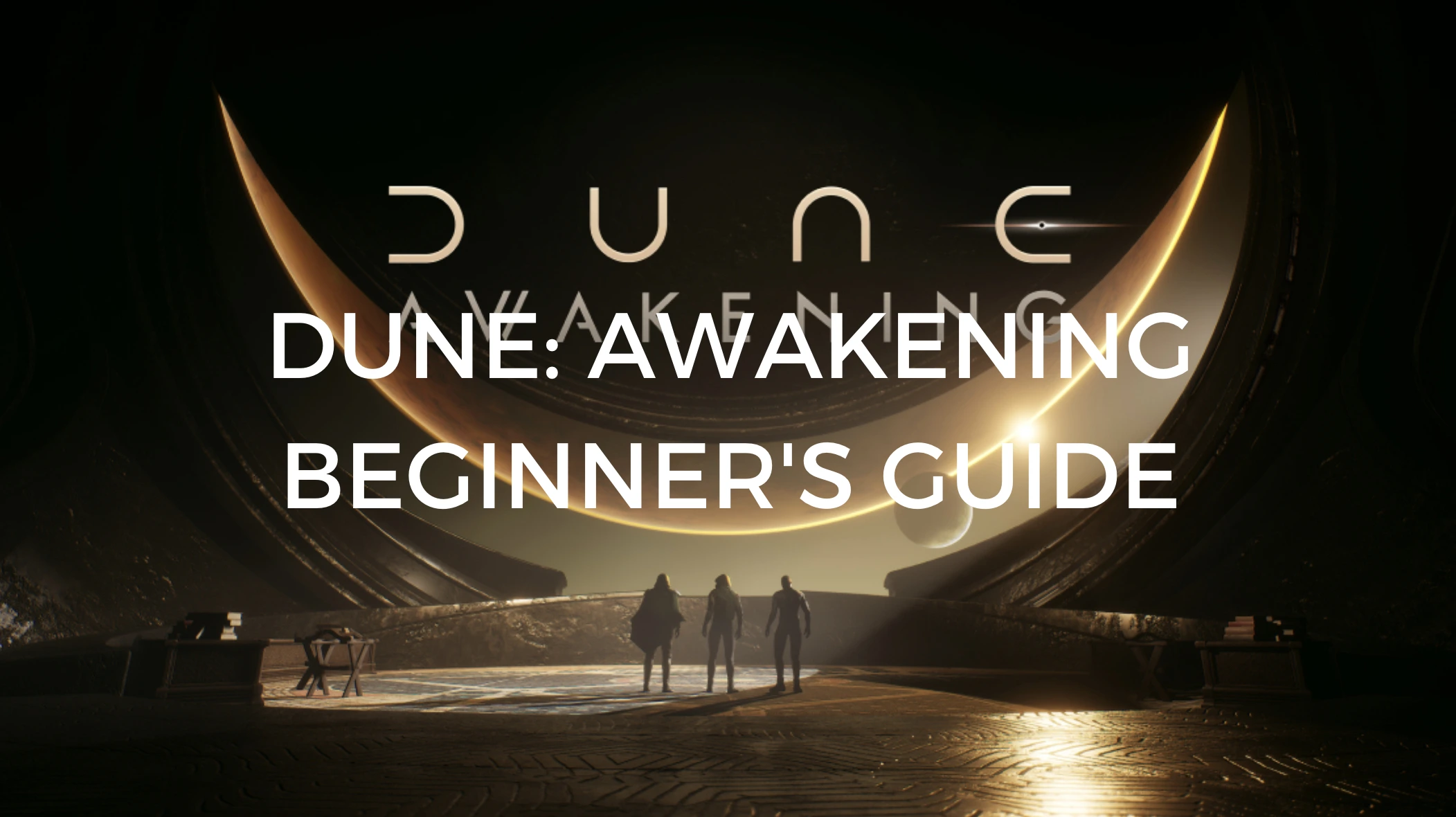- > Dune Awakening CHOAM Salvage Rights Event - Strategies, Rewards, Tips
- > Dune Awakening Erythrite Crystal Farming Guide
- > Dune Awakening All Mysa Tarill Unique Schematics and Locations
- > Dune Awakening Dupe Glitch: Another Duplication Found and Patched
- > Dune Awakening Arrakeen Guide - What to Do, Where to Go & Tips
- > Dune Awakening Solo Endgame Guide for Survivors of the Deep Desert
The Ultimate Dune: Awakening Beginner's Guide
Welcome to Arrakis, rookie. If you’re here, chances are you’ve either just picked up Dune: Awakening, or you’re planning to and want to hit the ground running. Good call. This game isn’t just your average survival MMO—it’s brutal, complex, and deeply tied to the lore of Frank Herbert’s universe.
In this Dune: Awakening Beginner’s Guide, we’re diving into everything you need to know to stay alive and thrive: character creation, best starting class, resource priorities, base building, and surviving sandworms. If you're looking to buy Dune Awakening Solari for an early boost or need quick resources, PVPBank is a trusted name in the community. Just don't skip the fundamentals—no currency or shortcut replaces good old knowledge.
Let’s get you started, Fremen-style.
Character Creation: More Than Just Looks
Dune: Awakening has a seriously detailed character creation system. You can customize everything from scars and blemishes to eye shape and facial structure. But more important than cosmetics is your origin—you can start as nobility, bondsman, smuggler, and more. This impacts your story and interactions early on, so don’t just pick one at random.
Best Starting Class: Bene Gesserit
When it comes to early survivability, the Bene Gesserit class is top-tier. Their special ability, Bindu Sprint, lets you sprint at full speed without using stamina—an absolute game-changer when sandworms start rumbling beneath your feet. In this Dune: Awakening Beginner’s Guide, we highly recommend starting with this class, especially if you’re soloing.
More info: Dune Awakening Classes Tier List
Don’t Skip the Tutorial (Seriously)
It’s tempting to dive right in, but don’t skip the tutorial. It covers crucial mechanics like:
-
Hydration management (yes, you can die of thirst)
-
Crafting your first tools
-
Combat basics (how to bypass shields with slow strikes)
-
Surviving your first sandstorm
Think of the tutorial as your initiation rite. You’ll thank yourself later.
Surviving the First Few Hours
Crash Site Priority
You’ll wake up near a crashed vehicle. Loot everything. Look for:
-
Scrap metal (essential for tools)
-
Armor plating (early defense)
-
Fuel cells (you’ll need these soon)
Building Shelter
Build your first base on rocky ground, never sand. Sandworms can and will destroy your home if it's built on soft terrain.
Key components:
-
Minimal walls and a roof (for heat and storm protection)
-
A generator (plus 3 fuel cells = 10 days of power)
-
Your first Sub-theft Console to claim land
Place your structures wisely. Open sand equals open grave.
The Intel Rush
Before building out a full base, go for an intel rush:
-
Locate and raid 3 nearby outposts (marked with gray circles)
-
Each gives 3 intel folders (totaling 9 research points)
-
Use those to unlock Bindu Sprint and suspensor pads
-
Craft binoculars (need 8 salvaged metal) to scout POIs fast
This early game route will put you miles ahead of the average player.
Early Combat Tips
Melee Mechanics
Combat in Dune: Awakening is skill-based. Learn to parry—a perfect block stuns enemies. For shielded foes, don’t mash attacks. Use slow, deliberate strikes. Only slow blades get through shields.
Ranged Weapons
Start with the Maula Pistol. It’s basic but effective. Upgrade to the Carp 38 rifle once you gather better parts.
Don’t underestimate the Hajra Literjon dagger. Every hit bleeds out blood packs, which you can purify into water—a huge survival edge in long fights.
Avoiding the Sardaukar
Sardaukar patrols are no joke. At night, spotlights signal their movement. If you see one, either sneak around or attack quickly and unpredictably—they call reinforcements if you drag out the fight.
Plan your raids around dawn—fewer guards, better loot, less chance of getting steamrolled.
Base Building Essentials
Once you’ve got a foothold:
Must-Build Structures
-
Generator: Keeps your base shielded from storms
-
Salvage Fabricator: For metal parts
-
Blood Purifier: Converts blood packs to water
-
Ore Refinery: Processes copper, iron, and more
Pro Tips
-
Use blueprints to let your squad help build.
-
Lay out your base in a defensible, logical design. Leave space for expansion and defense turrets later.
Remember: Dune punishes poor planning.
Crafting and Resource Prioritization
Early on, prioritize:
-
Copper: For weapons, gear, and upgrades
-
Micro-sandwich fabric: Found in caves, needed for stillsuits
-
Fuel cells: For generators and vehicles
Use the improvised cutter for mining. It’s weak, but fast enough for basic resource gathering.
Check crashed vehicles often—they’re goldmines for scrap, parts, and tools.
Exploration and Fast Travel
Binoculars
Craft binoculars ASAP. They reveal hidden POIs and award discovery XP. Knowing where to go (and what to avoid) is half the battle.
Vehicles: The Sandbike
You’re not going far on foot. The Sandbike is your first real transport.
-
Built using blue lab components
-
Found in Imperial testing stations
-
Cross the Vermilion Gap safely with it
Upgraded storage lets you carry extra water, tools, and loot—a must for deeper desert runs.
Environmental Hazards: Don’t Get Eaten
Drum Sand
This stuff is deadly. Red-marked sand vibrates, making noise. Sandworms love noise. Cross quickly or not at all.
Sandstorms
Stay under cover or in your base. Storms shred armor, reduce visibility, and mess with your endurance. If you’re caught out, find high ground and wait it out.
Final Thoughts: Play Smart, Survive Longer
Dune: Awakening rewards smart play, strategic planning, and a deep understanding of its mechanics. This isn’t a game where you can just charge in and expect to win. Every choice matters—where you build, how you fight, what you carry. Use this Dune: Awakening Beginner’s Guide as your launchpad, but keep adapting. Arrakis is always changing.
And if you ever need a little edge, it’s never a bad time to buy Dune Awakening Solari to gear up faster—or check out PVPBank for safe and reliable in-game currency services.
Welcome to the sand, rookie. Let’s see if you’ve got what it takes.

